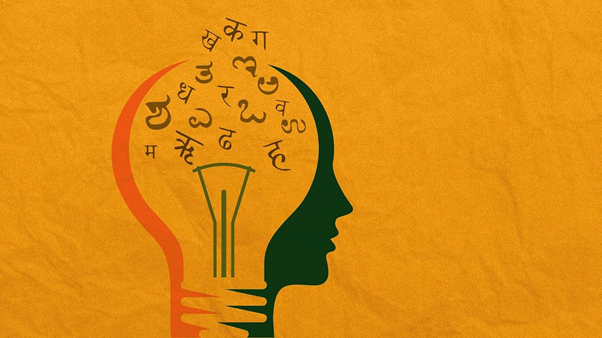Languages panel recommendations on Inclusion of Hindi as the Official language
-
Context
In the 11th volume of the Report of the Official Language Committee headed by the Home Minister has caught pan India protests. The committee has recommended on increase the use of Hindi in Official uses.

-
Background
- The makers of the Constitution had decided that both ‘Hindi’ and ‘English’ should be used as official languages for the first 15 years of the Republic, but in the wake of intense anti-Hindi agitations in the south, the Centre announced that English would continue to be used even after 1965.
- On January 18, 1968, Parliament passed the Official Language Resolution to build a comprehensive programme to increase the use of Hindi for official purposes by the Union of India.
- The Hindi has being mandated by Article 351 of the Constitution, the ‘Official Language Committee’ was set up to review and promote the use of Hindi in official communications.
- The first Report of the Committee was submitted in 1987. The ninth Report, submitted in 2011 by the panel headed by then Home Minister P Chidambaram, made 117 recommendations, including suggestions to increase the use of Hindi in computers in government offices.
-
What does the recent Report of the Committee says?
- The Committee has made around 100 recommendations.
- It included that Hindi should be the medium of instruction in IITs, IIMs, and central universities in the Hindi-speaking states.
- The language used for communication in the administration should be Hindi, and efforts should be made to teach the curriculum in Hindi, but the latter is not mandatory.
- The panel wants state governments to warn officials that their reluctance to use Hindi would reflect in their Annual Performance Assessment Report (APAR).
- Knowledge of Hindi would be compulsory in a number of government jobs.
- The Committee has suggested that efforts should be made to use Hindi “100 per cent” in the ‘A’ states.
-
What are the provisions for implementation of these recommendations?
- According to the Official Languages Act, 1963 and the Rules and Regulations (of the Act), 1976, states like Kerala and Tamil Nadu are exempted from these provisions.
- The law is implemented only in ‘A’ category states, in which the official language is Hindi.
- According to the Rules, region ‘A’ includes the states of Bihar, Haryana, Himachal Pradesh, Madhya Pradesh, Chhattisgarh, Jharkhand, Uttarakhand, Rajasthan, and Uttar Pradesh, and the Union Territories of Delhi and Andaman and Nicobar Islands.
- Region ‘B’ includes Gujarat, Maharashtra, and Punjab, and the Union Territories of Chandigarh, Daman and Diu and Dadra and Nagar Haveli.
- Other states, where the use of Hindi is less than 65 per cent, are listed under region ‘C’.
-
What does the Constitution says?
The Eighth Schedule to the Constitution consists of the following 22 languages:
- Assamese, Bengali, Gujarati, Hindi, Kannada, Kashmiri, Konkani, Malayalam, Manipuri, Marathi, Nepali, Oriya, Punjabi, Sanskrit, Sindhi, Tamil, Telugu, Urdu, Bodo, Santhali, Maithili and Dogri.
- Of these languages, 14 were initially included in the Constitution.
- Sindhi language was added by the 21stAmendment Act of 1967.
- Konkani, Manipuri, and Nepali were included by the 71stAmendment Act of 1992.
- Bodo, Dogri, Maithili, and Santhali were added by the92nd Amendment Act of 2003 which came into force in
Currently there are six languages that enjoy the ‘Classical’ status in India:
- Tamil (declared in 2004), Sanskrit (2005), Kannada (2008), Telugu (2008), Malayalam (2013), and Odia (2014).
- All the Classical Languages are listed in the Eighth Schedule of the Constitution
-
What does the new education policy say about teaching in Hindi and other regional languages?
- The announcement of the new National Education Policy (NEP) in 2020 too had addressed this issue.
- Politicians from Southern India had alleged attempts to “impose Hindi and Sanskrit”; however, the Centre had also promoting ‘Regional languages’.
- The NEP says that mother tongue or the regional language would be the “preferred” mode of instruction until Class 5, and possibly Class 8.
-
What will be the possible impacts of the recommendations?
- End Gaps for common people who face difficulty to understand English in Offices and government documents.
- Reduce the gaps between understanding local terms by the Officials.
- Sensitisation of administrative officers amongst common people especially in rural areas.
- Hindi speaking states has highest possibility to implement this recommendation so that the language barrier can be reduced among the rich and poor.
- Educational Institutions especially private ones prefer to teach children in English and later on they face difficulty to understand their own language i.e. Hindi.
-
What can be the future challenges after its implementation?
- If implemented in Institutions and Central Universities, can make them to achieve the global standards.
- Can become a tedious task for students to understand the terms which are technical and becomes difficult.
- Mother Tongue in few states has difficult script which is unable to all to read, however they are able to speak and understand the language.
-
Conclusion
Hence , rather than imposing any specific state or regional language as the national language and arguing over such issues, we must think of ways and means of making a common language 'English' reach each and every citizen of the country, so that justice is done to everyone.
By doing so we will not only bridge the gap between various parts of the country, but also move forward as India – as a united nation.

